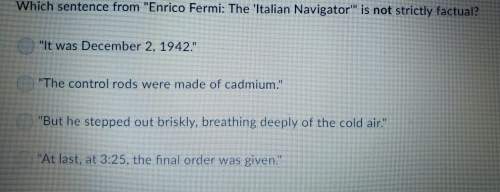Iam failing : (
1)what type of power does the constitution grant to the supreme court ?
...

History, 26.01.2020 08:31 josephmelichar777
Iam failing : (
1)what type of power does the constitution grant to the supreme court ?
a)executive power
b)federal power
c)judicial power
d)legislative power
2)which are examples of judicial restraint in the supreme court? select all that apply.
a)the verdict overturns the lower court's ruling and sets a new precedent
b)the verdict is narrowly for the defendant, letting the previous verdict stand.
c)the court uses previous cases as examples of what path to follow in their verdict
d)the court decides that the law must be written to provide civil liberties for all
e)the court refuses to hear a case
the question in every case is whether the words used are used in such circumstances and are of such a nature as to create a clear and present danger that they will bring about the substantive evils that congress has a right to prevent.
3)in this excerpt justice oliver wendell holmes explains his ruling in schenck v. united states.
what argument is holmes making about personal rights and free speech?
a)the constitutional protection of free speech is absolute, and each person has a right to express his or herself however he or she wishes.
b)the government has the authority to prohibit or limit free speech whenever it wants and for any reason
c)the protection of free speech is important but there are some cases in which personal expression is irresponsible and can be banned.
d)the public has the responsibility to decide when people are abusing their right to free speech.
4)which is an example of prior restraint?
a)an editor reviews a newspaper article before it is published and removes it because it is poorly researched.
b)an interviewer goes ''off the record'' during an interview
c)posters advertising a movie are removed because of indecency .
d)the military censors a reporter's articles when the reporter is embedded with a military unit in the field.
5)what is the general rule used by the supreme court when deciding if civil disobedience is a constitutionally protected right?
a)if the protest is nonviolent then civil disobedience is protected by the first amendment right to free assembly.
b)civil disobedience is not protected by the first amendment and so protesters may be charged if they break any laws.
c)when the laws being protested are unconstitutional then civil disobedience is protected by the first amendment.
d)acts of civil disobedience are not protected if carried out on public property but have first amendment protection on private property.

Answers: 3


Other questions on the subject: History


History, 22.06.2019 04:10, dancemomsrule1
How does the balance of trade look different in the us today vs hot it looked in the 70's
Answers: 1

History, 22.06.2019 10:30, daedae11142
The picture below shows president richard nixon and the first lady standing before the great wall of china in 1972. they are smiling - as are the chinese with them. when this picture was shown on american television, americans were aware that it was a historic moment. what are two reasons why this moment was important for both china and the united states?
Answers: 1
You know the right answer?
Questions in other subjects:


Health, 10.07.2019 10:50


Biology, 10.07.2019 10:50

Mathematics, 10.07.2019 10:50



Health, 10.07.2019 10:50


Mathematics, 10.07.2019 10:50




